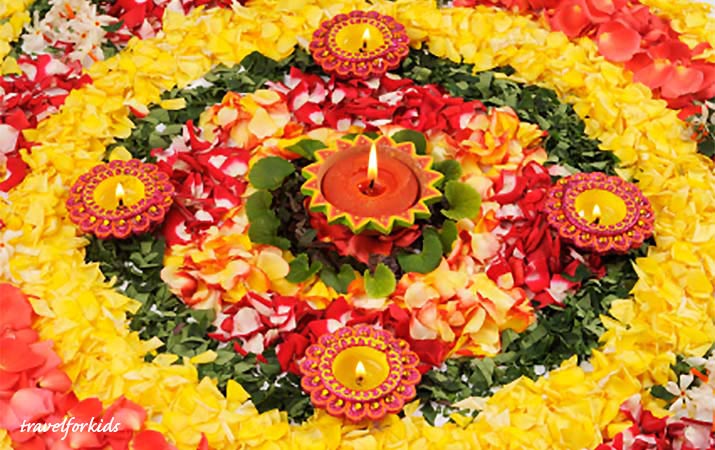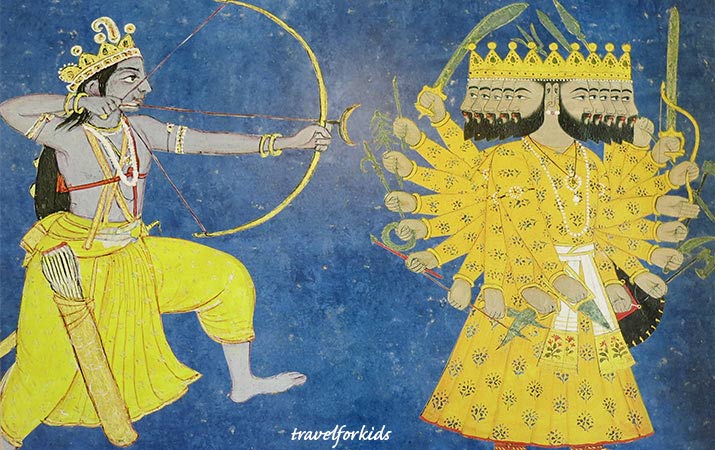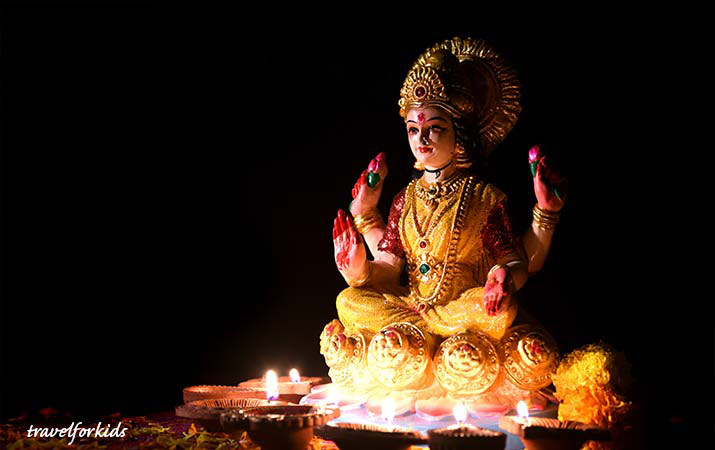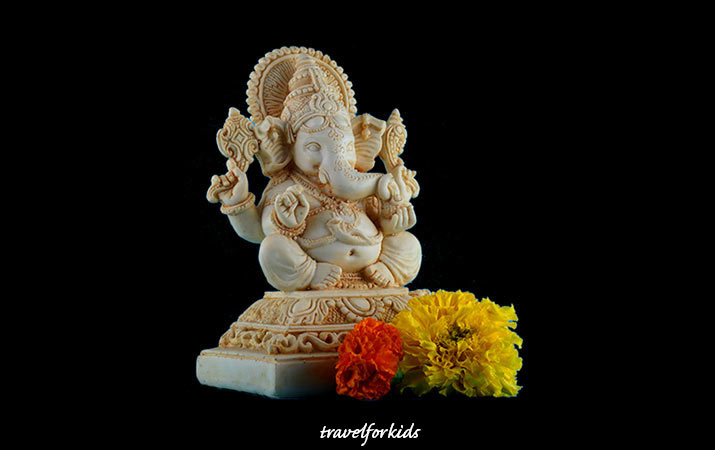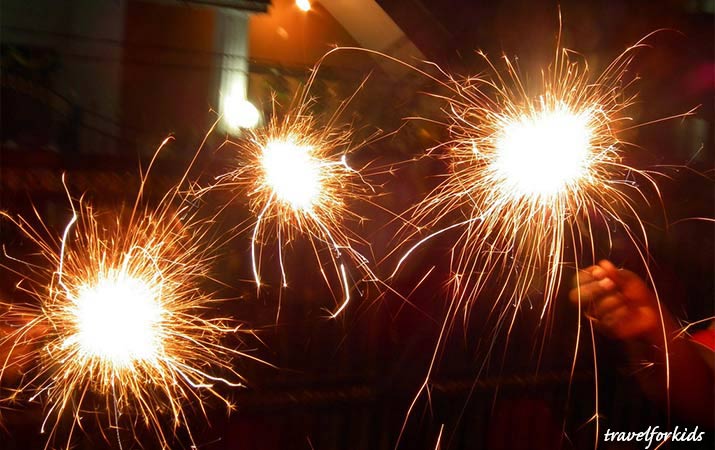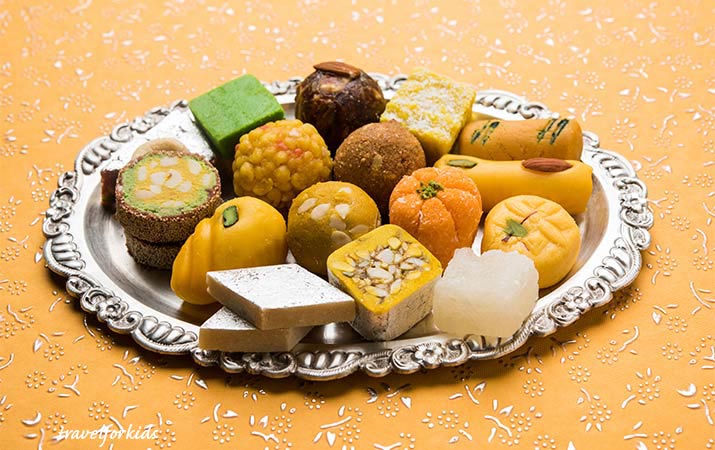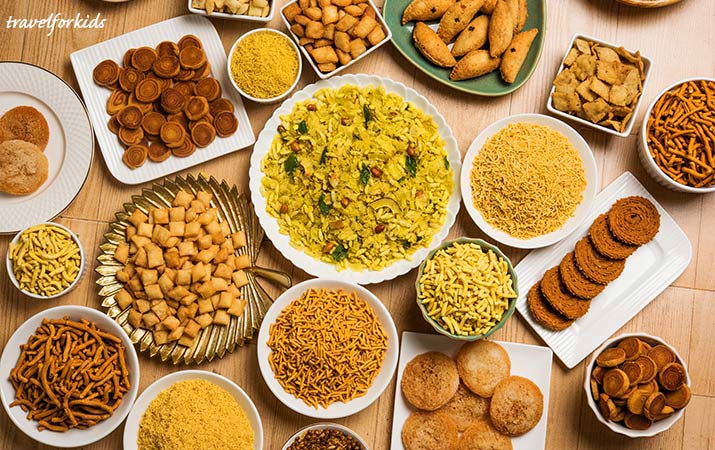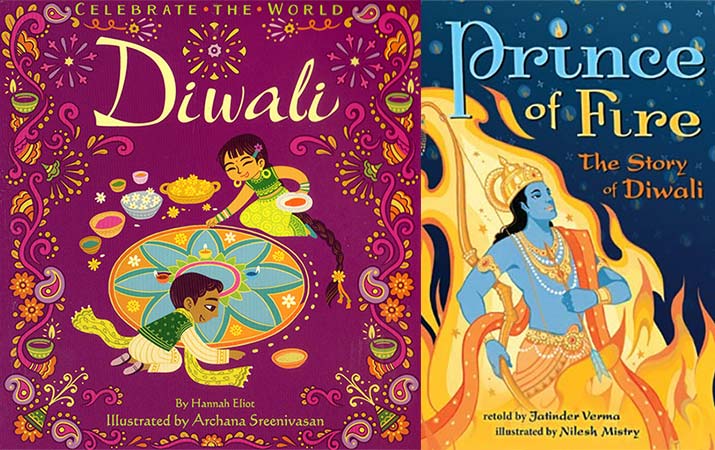Diwali, a five day festival from India, celebrates light over darkness, and good over evil. Origins of the holiday are tied to the Ramayana, epic poem of Prince Rama’s victory over the demon Ravana.
The festival is a time for families be together, make offerings to the goddess Lakshmi and god Ganesha, enjoy special holiday foods, light oil lamps, and watch the night sky illuminated with spinning sparklers and fireworks.
Prince Rama and Demon King Ravana
In the Ramayana, Prince Rama is an incarnation of the Hindu god Vishnu. Rama, his wife Sita and his brother Lakshmana are exiled from their kingdom for fourteen years, and go to live in darkest Dandaka forest.
While Rama is away chasing an enchanted golden deer, Sita is kidnapped by the ten-headed demon king Ravana. Rama goes off to rescue Sita, calling upon monkey king Hanuman and his monkey army for assistance.
In the final battle, Rama shoots arrow after arrow from his magic bow, until the demon king and forces of darkness are defeated.
When Rama returns to his kingdom with Sita, they are guided by oil lamps, lighting the way home.
Five day celebration
On the first two days of the festival, families clean and decorate their homes with lights, and make sand designs on the floor (rangoli) to welcome Lakshmi.
On the third day, night of the new moon, after darkness strings of lights and oil lamps (diyas) are lit, offerings and prayers are made to the goddess Lakshmi and the god Ganesha.
Lakshmi, the wife of Vishnu, is the goddess of wealth and prosperity. She sits on a red lotus flower, in two of her hands she holds lotus flowers, her other two hands are open, extending blessings and gifts.
Ganesha, the only god with an elephant head, has four arms and rounded tummy. He is much revered as a “remover of obstacles,” and bringer of good luck. Ganesha is also often portrayed with his pet mouse.
As part of the celebration, people light sparklers, and lighting displays.
“Mithai” sweets and snacks
Important preparations for Diwali include cooking or buying “mithai,” sweets and snacks, to present as gifts to family and friends, and have at home to eat, along with chai (tea).
A selection of sweets, shown above includes laddoos (fried sugary balls, may have nuts, raisins, sesame seeds etc.), burfi (rectangular or diamond-shaped bars of condensed milk with nuts, rose water, sometimes decorated with silver and gold leaf), peda (round milky balls flavored with cardamon, saffron and pistachios).
Savory (non sweet) snacks include sev (squiggly fried chickpea flour, seasoned with turmeric, chile, black pepper), chakri or chakli (spirals, rice or chickpea flour seasoned with cumin, sesame seeds), chivda (“Bombay mix” with lentils, peanuts, rice flakes, split chickpeas, curry leaves)
Diwali children’s books
- Diwali (Celebrate the World) by Hannah Eliot, Archana Sreenivasan.
- Fun introduction to Diwali, how the festival is celebrated with offerings, oil lamps (diyas), fireworks, homes and temples are decorated with lights, holiday foods are prepared, gifts exchanged with friends and family, and on the last day of Diwali, brothers and sisters are honored. (Board book)
- Amma, Tell Me About Diwali by Bhakti Mathur, Maulshree Somani.
- It’s Diwali, and their home is filled with lights, the children have eaten sweets, received gifts and offered prayers. “Why light diyas on Diwali?” the children ask. Their mother (Amma) tells the story of Prince Rama and the battle with Ravana. “How will Lakshmi find us?” wonder the children also. Amma tells another story of the goddess who visits a poor seamstress on Diwali. (Picture book)
- Prince of Fire: The Story of Diwali by Jatinder Verma, Nilesh Mistry.
- In this retelling of the Ramayana, Rama, an incarnation of the god Vishnu, and his wife Sita are exiled to the forest. When Sita is kidnapped by the demon Ravana, Rama calls upon the monkey king, Hanuman, to rescue Sita. Jewel-like illustrations. (Illustrated chapter book)
- Ganesha’s Sweet Tooth by Sanjay Patel and Emily Haynes.
- Not quite a traditional story, Ganesha is a Hindu god, but he’s also very fond of sweets, especially laddoos. When Ganesha discovers a new kind of laddoo, a jawbreaker laddoo, he has to try it, but breaks off his tusk. Ganesha meets up with the ancient poet Vyasa, who suggests Ganesha use his tusk to help write down a very long poem, the Mahabharata.
- The Little Book of Hindu Deities by Sanjay Patel.
- Find out how Ganesha got an elephant head, and Lakshmi survived the ocean of milk, plus descriptions of Hindu great gods and goddesses, the trinity of Brahma, Vishnu and Shiva, Vishnu avatars (Rama, Krishna), gods of fire, water and air, animal gods, and more. Good for older kids. (Illustrated chapter book)

